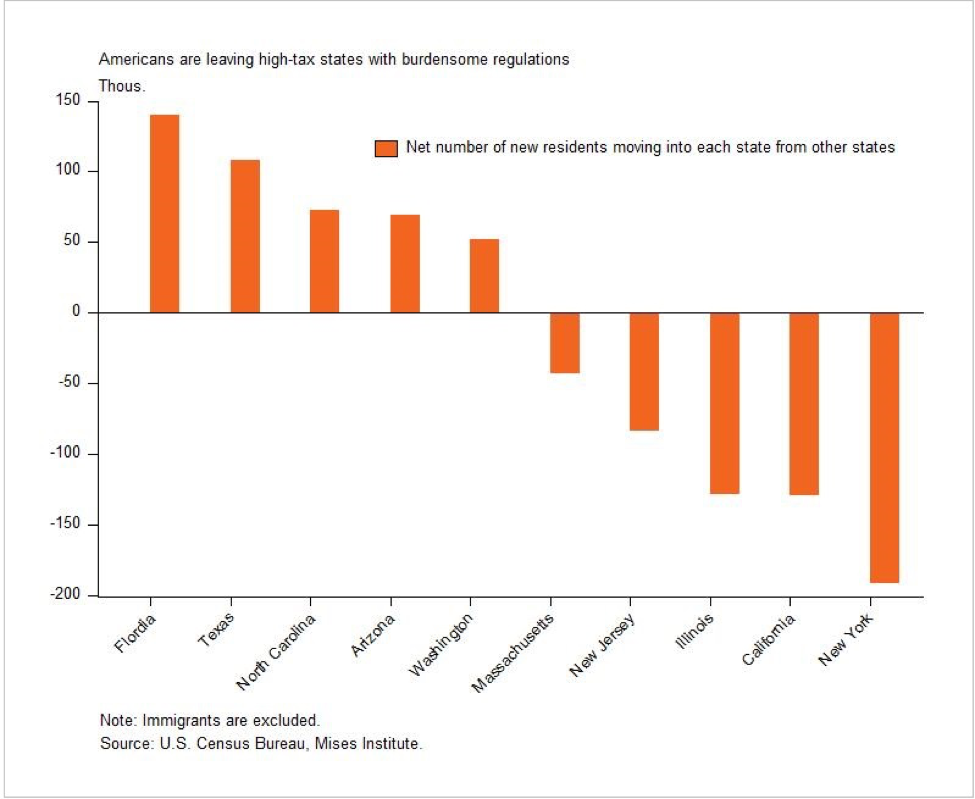A humdrum bureaucratic hiccup within the Commerce Department could have a direct and profound impact on future elections, allocations of billions of dollars in federal funding, policy making at the federal, state and local levels and corporate decision making.
The long-smoldering controversy over funding and upgrading the 2020 census flared up this week, with potentially adverse implications for the country unless the Trump administration can straighten out the mess.
The controversy, including the unexpected announced retirement of Census Director John Thompson and mounting costs that exceed the billions already budgeted, has been overshadowed by the firestorm over Trump’s firing of FBI director James B. Comey.
Related: Why the 2020 Census Could Blow a Huge Hole in the Federal Budget
The decennial census unquestionably is one of the most important functions of the Commerce Department’s Census Bureau – a laborious and often highly imprecise operation mandated by the Constitution.
That’s because the census generates vital information and data for the nation that is used -- among other things -- to reapportion the 435 seats in the House of Representatives, realign the boundaries of legislative districts in every state, and provide invaluable social, demographic and economic profiles of the country essential in developing public policy and conducting research.
“It’s enormously important,” said Andrew Reamer, a research professor at George Washington University’s public policy institute and an expert on demographics. “It’s hard to overstate its importance.”
Arguably, the political implications of the census are the most consequential, Reamer said, because it “provides the foundation for our democracy.”
Related: Trump Admits He Made Decision to Fire FBI Director Prior to DOJ Recommendation
Every 10 years, after the Census Bureau finishes counting the population, some states gain House seats, and others lose them, reflecting faster growth in some state and declining populations in other areas. Reapportionment is a zero-sum game: faster-growing states pick up more House seats while states in decline lose representation.
After the last census, for example, 10 states in the Northeast and Midwest lost a dozen seats while eight states in the South, Southwest, and far West picked up a corresponding number.
As one prime example, New York went from having 45 House members in the 1940s to only 27 following the 2010 Census, as the state’s population steadily declined, according to an NBC News analysis. At the same time, Florida’s representation in the House has grown from a mere six members in the 1940 to 27 today, enough to match the Gotham State’s influence on Capitol Hill.
Related: Budget Watchdog Tells Trump Government Spending Is on an Unsustainable Path
State legislatures use the new census data to draw new boundaries for congressional and state legislative seats, a process that invariably strengthens the party in control of the state legislature or the governorship.

The once-every-ten-year recount of the nation’s population also carries important implication for presidential politics, because it determines the number of Electoral College votes that each state receives. That distribution proved to be crucial in the 2016 presidential election: President Trump defeated Democrat Hillary Clinton in the all-important Electoral College vote, 304 to 227 while trailing her in the popular vote by nearly three million votes.
The data is also used by the federal government in allocating billions of dollars in federal financial assistance to state and local governments for highways construction, social services, grants and other assistance. For instance, census data is used in deciding how more than $400 billion a year is allocated for projects like new hospitals and schools. That amounts to more than $4 trillion over a 10-year period for an array of construction projects and services throughout the country.
The bulk of census-guided federal assistance is funneled to state governments through a handful of large formula grant programs, to aid low-income families and support highway infrastructure. Medicaid alone accounts for 58 percent of census-guided funding, a Brookings Institution analysis found. Census data provides key benchmarks for federal enforcement of civil rights and anti-discrimination laws and court decisions.
Related: The Five Biggest Winners and Losers in Trump’s Fiscal 2018 Budget
Census data is also critical to informing government policymakers at the federal, state and local levels, especially in deciding how to divvy up federal assistance for social safety net programs, roads, bridges, mass transit and a plethora of other activities.
Scholars, researchers, the Federal Reserve, the Council of Economic Advisers, congressional aides and others make exhaustive use of census data in studying the economy and looking for leading indicators of change. And businesses and corporations of all stripes and sizes – from Walmart to Seven-Eleven to small, independent enterprises -- rely on census data to determine where to locate new establishments and size up the available workforce.
The 2010 Decennial Census proved to be a costly and extremely rocky enterprise. Chaotic operations and mounting staff needs drove the budget through the roof.
Moreover, plans for census takers to use state-of-the-art, hand-held devices to record data in the field had to be scrapped when the devices proved unreliable. The Census Bureau scrambled to hire and train thousands of more workers to use paper forms.
“If the census count is inaccurate, then we have a problem in democracy, in the functioning of the economy, and in the wise and appropriate use of government funding,” Reamer said.
This year, the planning for the 2020 census is in shambles, with the sudden departure of Thompson, a highly regarded veteran of the complicated head-counting system, and his deputy.
Related: 3 Government Programs That Are Dangerously in the Red
Wilbur Ross, the Commerce Secretary, said that an acting director would be chosen from existing staff by the end of next month. However, the agency has clashed with Congress over funding. One of the agency’s biggest problems is trying to fulfill a congressional mandate to spend no more on the 2020 operation than the $12.5 billion it spent in 2010 – despite rising costs and a larger population to count.
The Wall Street Journal reported that a key Census Bureau initiative to modernize its data system has already run far over budget. The main data system being developed is currently estimated to cost $965 million, or $309 million more than a previous projection. The Government Accountability Office recently said that it doesn’t consider the Census Bureau’s latest estimate “reliable,” and has added the agency to its list of “high-risk” government operations.
Over the past three years, the GAO has made 30 recommendations to help the Bureau design and implement a more cost-effective census for 2020. So far, only six of them had been fully implemented as of January.





